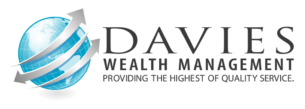Reaching Retirement: Now What?
You’ve worked hard your whole life anticipating the day you could finally retire. Congratulations — that day has arrived! But with it comes the realization that you’ll need to carefully manage your assets to give them lasting potential.
Review your portfolio regularly
Traditional wisdom holds that retirees should value the safety of their principal above all else. For this reason, you may assume your investment portfolio should be shifted to all fixed-income investments, such as bonds and money market accounts. The problem with this approach is that you’ll effectively lose purchasing power if the return on your investments doesn’t keep up with inflation.
While generally it makes sense for your portfolio to become progressively more conservative as you grow older, it may be wise to consider maintaining at least a portion of your portfolio in growth investments.
Spend wisely
Don’t assume that you’ll be able to live on the earnings generated by your investment portfolio and retirement accounts for the rest of your life. At some point, you’ll probably have to start drawing on the principal. But you’ll want to be careful not to spend too much too soon. This can be a great temptation, particularly early in retirement.
A good guideline is to make sure your annual withdrawal rate isn’t greater than 4% to 6% of your portfolio. (The appropriate percentage for you will depend on a number of factors, including the length of your payout period and your portfolio’s asset allocation.) Remember that if you whittle away your principal too quickly, you may not be able to earn enough on the remaining principal to carry you through the later years.
Understand your reaching retirement plan distribution options
Most traditional pension plans pay benefits in the form of an annuity. If you’re married, you generally must choose between a higher retirement benefit paid over your lifetime, or a smaller benefit that continues to your spouse after your death. A financial professional can help you with this difficult, but important, decision.
Historically, other employer retirement plans, such as 401(k)s, typically haven’t offered annuities; however, this may change as a result of legislation passed in 2019 that makes it easier for employers to offer such products. If your plan offers an annuity as a distribution option, you may want to consider how it might fit in your long-term plan.
You might also consider whether it makes sense to roll your employer retirement account into a traditional IRA, which typically has flexible withdrawal options. If you decide to work for another employer, you might also be able to transfer assets you’ve accumulated to your new employer’s plan, if allowed.1
Finally, you may also choose to take a lump-sum distribution from your work-based retirement plan; however, this could incur a substantial tax obligation and a possible 10% penalty on the tax-deferred portion of the amount if you are under age 59½, unless an exception applies.
Plan for required distributions
Keep in mind that you must generally begin taking required minimum distributions (RMDs) from employer retirement plans and traditional IRAs after you reach age 72, whether you need them or not.2
If you own a Roth IRA, you aren’t required to take any distributions during your lifetime. Your funds can continue to grow tax deferred, and qualified distributions will be tax free.3 Because of these unique tax benefits, it may make sense to withdraw funds from a Roth IRA last.
Know your Social Security options
You’ll need to decide when to start receiving your Social Security retirement benefits. At normal retirement age (which varies from 66 to 67, depending on the year you were born), you can receive your full Social Security retirement benefit. You can elect to receive your Social Security retirement benefit as early as age 62, but if you begin receiving your benefit before your normal retirement age, your benefit will be reduced. Conversely, if you delay retirement, you can increase your Social Security retirement benefit.
Consider phasing
For many workers, the sudden change from employee to retiree can be a difficult one. Some employers, especially those in the public sector, have begun offering “phased retirement” plans to address this problem. Phased retirement generally allows you to continue working on a part-time basis — you benefit by having a smoother transition from full-time employment to retirement, and your employer benefits by retaining the services of a talented employee. Some phased retirement plans even allow you to access all or part of your pension benefit while you work part time.
Of course, to the extent you are able to support yourself with a salary, the less you’ll need to dip into your retirement savings. Another advantage of delaying full retirement is that you can continue to build tax-deferred funds in your IRA or employer-sponsored retirement plan. As mentioned earlier, however, you generally will be required to start taking RMDs from most employer-sponsored plans and traditional IRAs once you reach age 72, if you want to avoid substantial penalties.2
If you do continue to work, make sure you understand the consequences. Some pension plans base your retirement benefit on your final average pay. If you work part time, your pension benefit may be reduced because your pay has gone down. Remember, too, that income from a job may affect the amount of Social Security retirement benefit you receive if you are under normal retirement age. But once you reach normal retirement age, you can earn as much as you want without affecting your Social Security retirement benefit.
Facing a shortfall
What if you’re nearing retirement and you determine that your retirement income may not be adequate to meet your retirement expenses? If retirement is just around the corner, you may need to drastically change your spending and saving habits. Saving even a little money can really add up if you do it consistently and earn a reasonable rate of return. And by making permanent changes to your spending habits, your savings could last even longer. Start by preparing a budget to see where your money is going. Here are some suggested ways to stretch your retirement dollars:
- Refinance your home mortgage if interest rates have dropped since you obtained your loan, or reduce your housing expenses by moving to a less expensive home or apartment.
- Access the equity in your home. Use the proceeds from a second mortgage or home equity line of credit to pay off higher-interest-rate debts, or consider a reverse mortgage. (Consider these strategies very carefully before making any final decisions.)
- Sell one of your cars if you have two. When your remaining car needs to be replaced, consider buying a used one.
- Transfer credit card balances from higher-interest cards to a low- or no-interest card, and then cancel the old accounts.
- Ask about insurance discounts and review your insurance needs (e.g., your need for life insurance may have lessened).
- Reduce discretionary expenses such as lunches and dinners out.
By planning carefully, investing wisely, and spending thoughtfully, you can increase the likelihood that your retirement will be a financially comfortable one.





Leave a Reply